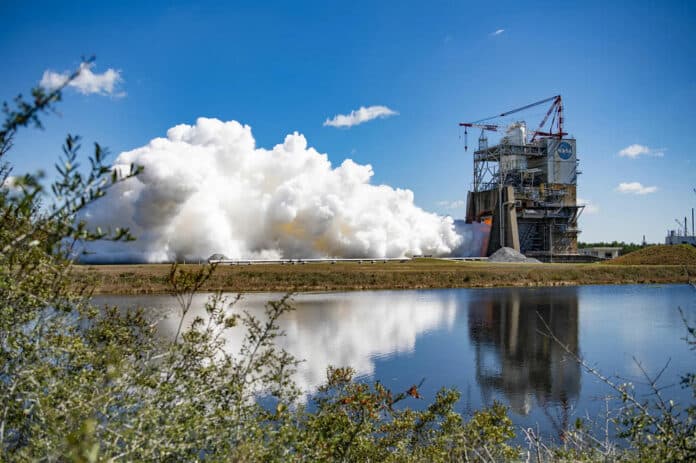NASA is gearing up for its first crewed Artemis missions and is preparing to build, test, and assemble the next iteration of its SLS (Space Launch System) rocket.
The new version, known as Block 1B, is even larger and more powerful than its predecessor and has the capability to transport a crew and large pieces of hardware to the Moon in a single launch. It is set to debut for the Artemis IV mission and will certainly be a significant step forward for the Artemis program.
“From the beginning, NASA’s Space Launch System was designed to evolve into more powerful crew and cargo configurations to provide a flexible platform as we seek to explore more of our solar system,” said John Honeycutt, SLS Program manager. “Each of the evolutionary changes made to the SLS engines, boosters, and upper stage of the SLS rocket are built on the successes of the Block 1 design that flew first with Artemis I in November 2022 and will, again, for the first crewed missions for Artemis II and III.”
Early manufacturing for NASA’s upgraded upper stage is already underway at the Michoud Assembly Facility in New Orleans, and preparations for the green run test series are in progress at the Stennis Space Center in Mississippi.
Although Block 1B uses the same basic core stage and solid rocket booster design as Block 1, it features two significant changes that will make it even more capable for future missions to the Moon and beyond. The first change is a more powerful second stage, and the second is an adapter for large cargo, which will expand the possibilities for future Artemis missions. These advancements will undoubtedly help NASA achieve its ambitious goals for space exploration.
“The Space Launch System Block 1B rocket will be the primary transportation for astronauts to the Moon for years to come,” said James Burnum, deputy manager of the NASA Block 1B Development Office. “We are building on the SLS Block 1 design, testing, and flight experience to develop safe, reliable transportation that will send bigger and heavier hardware to the Moon in a single launch than existing rockets.”
NASA is making changes to the in-space stage used for the first three Artemis missions to the Moon. The interim cryogenic propulsion stage (ICPS) currently in use will be replaced by a larger and more powerful exploration upper stage (EUS), which will feature four engines and a different battery.
These changes will allow the EUS to support the first eight hours of the mission following launch, as compared to the ICPS’s two hours. All new hardware and software will be designed and tested to meet the different performance and environmental requirements.
Another change is the implementation of a universal stage adapter that connects the rocket to the Orion spacecraft. This new adapter will provide over 10,000 cubic feet of space, offering the ability to carry large components such as modules for NASA’s future Gateway outpost, which will be in lunar orbit to support crew between surface missions. This new adapter will also provide unique opportunities for scientific research on the Moon.
The Space Launch System (SLS) upgrades will increase its payload capability from 59,000 pounds to approximately 84,000 pounds. This will undoubtedly enhance the SLS’s ability to carry heavier loads and support more ambitious missions. The four RL10 engines that will be used during the exploration of the upper stage green run test series at Stennis are complete. Additionally, the work on the Artemis IV core stage is in progress at Michoud, which is located nearby.
The increased number of engines, propellant, and thrust of the EUS will allow astronauts more launch opportunities and greater flexibility to intercept the Moon. Additionally, the ability to communicate with the in-space stage and safely control it using Orion’s docking system is a major accomplishment.
NASA is working towards landing the first woman, first person of color, and first international partner astronaut on the Moon under the Artemis program. The SLS rocket, along with Orion and the Gateway, will be crucial in achieving this goal. With its ability to send astronauts, supplies, and equipment to the Moon in a single launch, the SLS rocket is vital to NASA’s deep space exploration program.
Overall, these advancements in rocket engine design and space exploration technology are truly remarkable and represent a significant step forward in our quest to explore and understand the universe.
